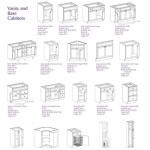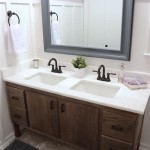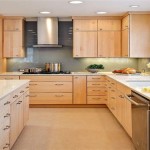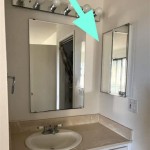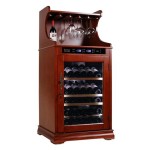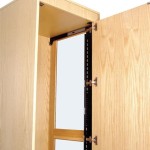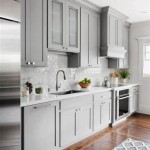Review of Standard Cabinet Sizes: References in Taiwan
When designing a kitchen or bathroom, the choice of cabinets plays a crucial role in determining the functionality, aesthetics, and overall efficiency of the space. Understanding standard cabinet sizes is essential for ensuring proper planning and a seamless fit during installation.
In Taiwan, standard cabinet sizes are typically based on the metric system. The most common unit of measurement used is the centimeter (cm). Cabinets are available in both base and wall-mounted configurations, with varying heights, widths, and depths.
Base Cabinets
Base cabinets are designed to be installed directly on the floor and provide storage for cookware, utensils, and other kitchen essentials. Standard base cabinet heights in Taiwan are typically 70 cm, while depths range from 55 cm to 60 cm.
For widths, the most common sizes are:
- 30 cm
- 45 cm
- 60 cm
- 90 cm
- 120 cm
Wall-Mounted Cabinets
Wall-mounted cabinets are typically installed above base cabinets and provide additional storage space for items less frequently used. Standard wall-mounted cabinet heights in Taiwan are typically 35 cm or 45 cm, and depths vary from 30 cm to 35 cm.
Common widths for wall-mounted cabinets include:
- 30 cm
- 45 cm
- 60 cm
- 90 cm
Other Considerations
In addition to standard sizes, there are several other factors to consider when choosing cabinets:
- Door Style: Cabinet doors can be framed or frameless, and come in various styles, including shaker, flat-panel, and raised-panel.
- Hardware: Cabinet hardware, such as knobs and pulls, can enhance the overall design and functionality of the cabinets.
- Lighting: Under-cabinet lighting can provide additional illumination and enhance the visibility inside cabinets.
- Accessories: Cabinet accessories, such as lazy Susans and roll-out shelves, can increase storage capacity and organization.
References in Taiwan
For further information and references on standard cabinet sizes in Taiwan, consider the following resources:
- National Bureau of Standards (NBS): The NBS provides official guidelines and standards for cabinet sizes and other building materials in Taiwan.
- Taiwan Woodworking Association (TWA): The TWA is a professional organization that promotes the woodworking industry in Taiwan and provides resources on cabinet design and manufacturing.
- Local Hardware and Cabinet Showrooms: Hardware and cabinet showrooms in Taiwan can provide hands-on demonstrations and consultations regarding cabinet sizes and design options.
By understanding standard cabinet sizes and consulting reliable references in Taiwan, designers and homeowners can make informed decisions and ensure a successful cabinet installation project.

45u Standard Depth Server Rack Cabinet Eaton

42u Server Rack Cabinet Standard Depth Eaton

42u Server Rack Cabinet Standard Depth Window Eaton

Biosafety Level Wikipedia

Sustaility Free Full Text Designing Ldquo Forest Rdquo Into Daily Lives For A Case Study Of Taiwanese Wooden Furniture Design

Sustaility Free Full Text Comparison Of The Technical Efficiency Construction Industries Mdash A Case Study Taiwan And Mainland China

Sensors Free Full Text Co Dependency Of Iaq In Functionally Diffe Zones Open Kitchen Restaurants Based On Sensor Measurements Explored Via Mutual Information Ysis

Server Rack Cabinet 19 Inch 38u 600x600x1800mm Floor Standing Mobirack By Rackmatic Cablematic

Taiwan And The Foundry Model Nature Electronics

18u Server Rack Cabinet Patch Depth Wall Mount Eaton
Related Posts

